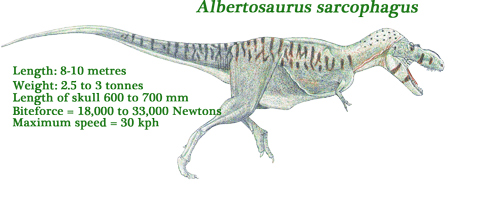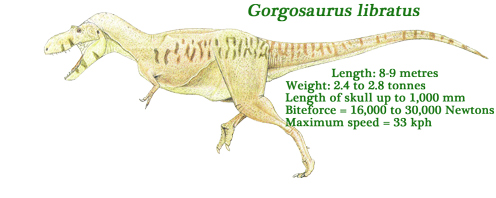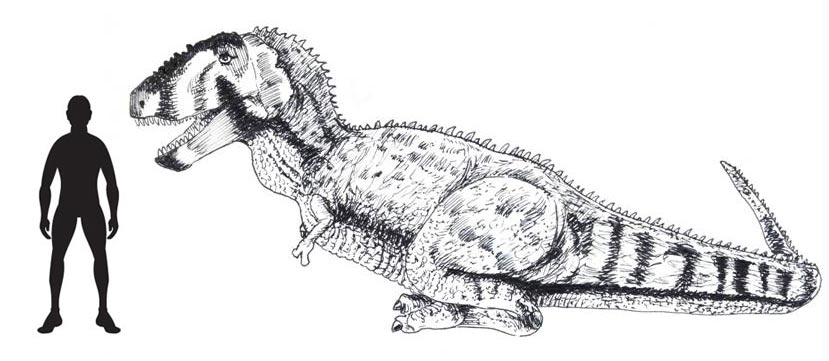Tale of the Tape – Albertosaurinae
Team members at Everything Dinosaur get sent lots of letters, pictures and emails from fans of dinosaurs, we are grateful for all the correspondence and we do our best to respond to those that require a reply. A frequently asked question is which dinosaur would win in a fight between two species? We tend to steer clear of these sorts of debates, after all, there is not a lot fossil evidence to back up any claims and many of the opponents in such contests happen to be separated by thousands of miles and in most cases millions of years.
One email received recently, asked the question who would win in a fight between Gorgosaurus and Albertosaurus? We thank Theodore, Clare and Adam for this question. We have had a lot of questions about Gorgosaurus since this fearsome tyrannosaur appeared in the “Walking with Dinosaurs in 3-D” film that came out in December 2013. Let’s try and answer the question by explaining a little bit about what we think we know from fossils when it comes to these two types of meat-eating dinosaurs.
Albertosaurus and Gorgosaurus Are Very Closely Related
The famous Canadian palaeontologist Lawrence Lambe established the Gorgosaurus genus exactly 100 years ago, when he described fossils of a large tyrannosaur Gorgosaurus libratus. The dinosaur known as Albertosaurus was named a few years earlier (1905), although the specimens which became known as Albertosaurus fossil material were actually found back in the mid 1880s.
Albertosaurus (Albertosaurus sarcophagus) was named after the part of Canada in which the fossils were found, the Province of Alberta. Palaeontologists have argued over whether there are two different types of tyrannosaur represented by the fossils. A comprehensive review carried out in 2003, established Gorgosaurus and Albertosaurus as different, but very closely related dinosaurs.
Sister Taxa
Analysis of more recently discovered Gorgosaurus and Albertosaurus fossils enabled a team of scientists to establish in 2003 that Gorgosaurus was indeed a different type of meat-eating dinosaur to Albertosaurus. Gorgosaurus is believed to have had slightly longer legs, and slight differences in the skull. Some scientists have suggested that since the majority of fossil material ascribed to Gorgosaurus is found in older rocks than the majority of fossil material believed to represent Albertosaurus, then Gorgosaurus may have been the ancestor of Albertosaurus.
These dinosaurs were very closely related. They have been put into their own sub-family of tyrannosaurs, the Albertosaurinae. For the moment, most scientists agree that just Gorgosaurus and Albertosaurus belong in the Albertosaurinae, they are sister taxa, which means that Gorgosaurus and Albertosaurus are more closely related to each other than they are to any other type of tyrannosaur.
Who Would Win in a Fight?
Fossils of Gorgosaurus and Albertosaurus have been found in the same parts of North America and if we assume that these dinosaurs lived at around the same time, then it is possible that these species may have interacted. If they shared the same environment and competed for the same food and living space then these two dinosaurs may have been in competition with each other. Violent conflicts between Albertosaurus and Gorgosaurus would probably have been rare. We don’t know this for sure, fossils of both Gorgosaurus and Albertosaurus show signs of injury caused when the animal was alive, but there is no way of telling how these injuries occurred.
Gorgosaurus and Albertosaurus
If an adult Gorgosaurus and Albertosaurus met, then it is likely that they may have used visual signals to intimidate and threaten each other rather than an all out attack. Neither animal would want to risk serious injury as if they were unable to hunt as a result of wounds, then this would probably prove fatal. At Everything Dinosaur we have speculated in several articles about tyrannosaurs using scent making to establish territories to convey messages and ultimately to avoid other big predators.
A Tale of the Tape
Comparative studies have been undertaken by palaeontologists when it comes to tyrannosaurs. Everything Dinosaur team members have taken some of the data from these studies and reviewed the fossil record of these two species. Using information gleaned from the very largest specimens, we have come up with a “tale of the tape”, a simple data set that can be used to weigh up the likelihood of one type of dinosaur beating another type of dinosaur – in this case a battle of the Albertosaurinae.
Battle Statistics of Albertosaurus (speculative)

Albertosaurus sarcophagus and Gorgosaurus libratus would have been very equally matched. Based on an analysis of some of the larger fossil specimens, Albertosaurus could have been slightly larger than Gorgosaurus (although this point is contradicted by other evidence). The skull size, shape and jaw length was also different, giving Albertosaurus a slightly smaller skull, but a stronger and shorter muzzle that may have provided this dinosaur with a more powerful bite.
Battle Statistics of Gorgosaurus (speculative)

Limb Bone Measurements
Measurements of limb bones attributed to G. libratus indicate that this dinosaur may have had a slightly longer stride length. This information, when taken together with the smaller size of the Gorgosaurus specimens compared to the largest Albertosaurus fossils, suggest that Gorgosaurus could have been more agile and slightly faster. Looking at published academic papers on the bite force of members of the tyrannosaur family and relating this to a one-metre-long skull discussed in the collection of a Canadian museum, we have speculated that Gorgosaurus may have had a weaker bite, still a powerful bite, but perhaps its jaws were not as strong as a similar sized, shorter-skulled Albertosaurus.
So based on this highly speculative and in no way whatsoever valid analysis, we have the following:
- Albertosaurus (A. sarcophagus) – a little bigger, with a more powerful bite
- Gorgosaurus (G. libratus) – smaller, but more nimble and probably slightly faster
This is all very well and good, let’s put things onto a slightly more scientific footing. Both these predators are known from fossil material discovered in Canada. In 2013, an academic paper was published that looked at a concept called “niche partitioning” amongst plant-eating dinosaurs of the Dinosaur Park Formation (Alberta, Canada). This is the same rock formation that contains fossils of Albertosaurus. In this scientific paper, researchers proposed that there were lots of different herbivorous dinosaurs living together at the same time as they each specialised on feeding on different types of plants. Some herbivores, such as the slow moving, heavily armoured Euoplocephalus were grazers, whilst duck-billed dinosaurs such as Edmontosaurus were browsers of trees and other tall vegetation.
Niche Partitioning
This idea of niche partitioning applies to carnivores just as much as it does to herbivores. Dinosaurs such as Albertosaurus and Gorgosaurus probably specialised in hunting different types of prey when compared to their bigger and stronger tyrannosaur cousins (the Tyrannosaurinae). Living alongside the likes of Albertosaurus and Gorgosaurus was the stronger and more powerful Daspletosaurus (Daspletosaurus torosus) – “frightful lizard”. Roughly the same size as the largest members of the Albertosaurinae, Daspletosaurus may have been up to 1,000 kilogrammes heavier. It may have specialised in hunting horned dinosaurs whilst the lighter, faster tyrannosaurs such as Albertosaurus and Gorgosaurus may have hunted small hadrosaurs and pachycephalosaurs.
Truth is, no one will probably ever know for certain. All three dinosaurs seem to have been apex predators.
Look Out for Daspletosaurus

Picture credit: Everything Dinosaur
So, when it comes to looking at battling dinosaurs, what evidence we have can be interpreted in different ways. Albertosaurus versus Gorgosaurus, who do you think would win?
To view the extensive range of theropod dinosaur models and figures, including many tyrannosaurs available from Everything Dinosaur: Dinosaur Models and Figures Including Tyrannosaurs.






Awesome!!! I love this article!!!
#MoreDinoFights!!!